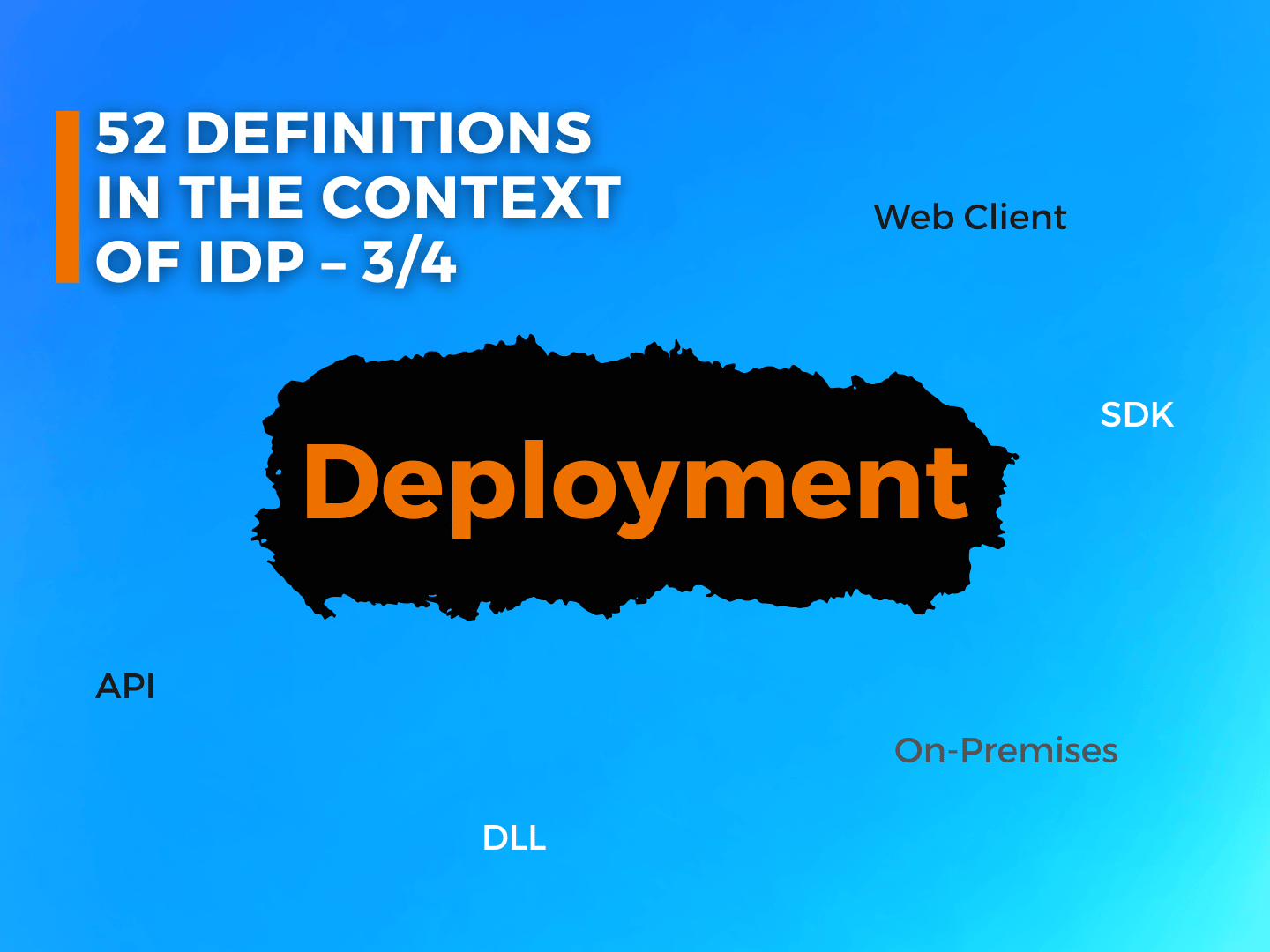Demystifying IDP: 52 Definitions in the Context of Intelligent Document Processing 3/4 – Deployment

Welcome to the 3rd part of our 4-part blog series titled “52 Definitions in the IDP Context.”
In Part 3, we dive into the crucial deployment aspects that empower Intelligent Document Processing (IDP) software to revolutionize document processing tasks. Subsequent parts (will) cover other essential aspects such as the metrics (1), technology (2), and industries (4) associated with IDP. Join us as we explore the fascinating world of IDP deployment, uncovering its transformative impact on productivity, data extraction, and business operations. Stay tuned for more insightful articles in this series!
API
API stands for application programming interface. Whether working as a standalone solution or included within an SDK, an API facilitates communication between two platforms. It does this by allowing its proprietary software to be leveraged by third-party developers. The developers can then enable their own users to indirectly use the service or services provided by the API solution. Thus, APIs facilitate interoperability and integration between software systems.
DLL
DLL stands for dynamic link library. A DLL is a collection of small programs that larger programs can load when needed to complete specific tasks. The small program, called a DLL file, contains instructions that help the larger program handle what may not be a core function of the original program.
On-Premises
On-Premises software (abbreviated to on-prem) is installed and runs on computers on the premises of the person or organization using the software, rather than at a remote facility such as a server farm or cloud.
SDK
SDK stands for software development kit. Also known as a devkit, the SDK is a set of software-building tools for a specific platform, including the building blocks, debuggers and, often, a framework or group of code libraries such as a set of routines specific to an operating system.
Web Client
A Web Client is a client-side application used for connecting to a web server over HTTP. It is typically a web browser or web app which displays web pages received from the server and allows users to interact with the web server.

